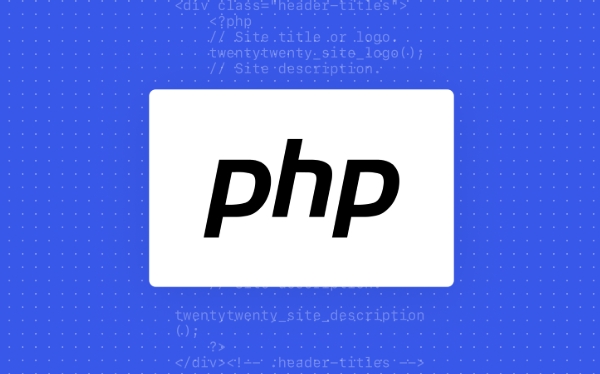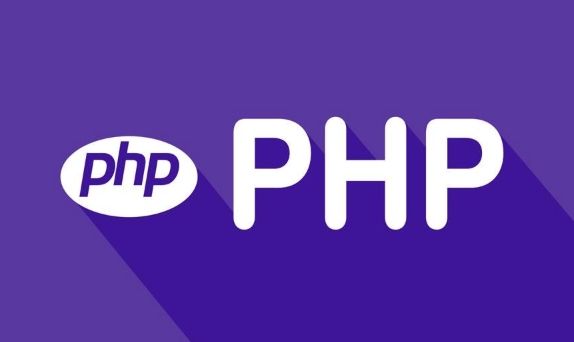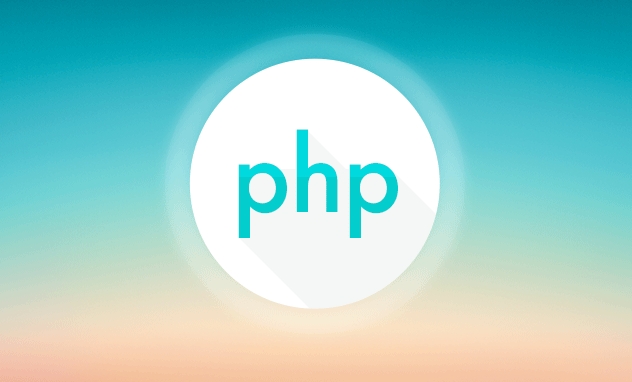 Backend Development
Backend Development
 PHP Tutorial
PHP Tutorial
 The Modern PHP Kickstart: A Developer's Guide to Essential Tooling
The Modern PHP Kickstart: A Developer's Guide to Essential Tooling
The Modern PHP Kickstart: A Developer's Guide to Essential Tooling
Jul 29, 2025 am 04:56 AMUse Composer for dependency management and autoloading with composer require and composer.lock. 2. Follow PSR-12 coding standards automated by PHP CS Fixer for consistent, readable code. 3. Write tests with PHPUnit to ensure code reliability and prevent regressions. 4. Use Docker or Laravel Sail for consistent, containerized local development environments. 5. Apply PHPStan or Psalm for static analysis to catch bugs and type issues early. 6. Use a smart IDE like PHPStorm or VS Code with PHP Intelephense for advanced code support and debugging. 7. Manage code with Git, meaningful branching, and a proper .gitignore that excludes vendor and environment files but includes composer.lock to ensure consistent dependencies across environments.

So you're diving into modern PHP development — great choice. Forget the PHP of the early 2000s; today’s ecosystem is robust, fast, and packed with tools that make building reliable, scalable applications not just possible, but efficient. If you're starting fresh or leveling up from legacy practices, here’s your no-fluff guide to the essential tooling every PHP developer should have in their toolkit.

1. Composer: Dependency Management Made Simple
You can’t do modern PHP without Composer. It’s the de facto standard for managing PHP packages and dependencies, much like npm for JavaScript or pip for Python.
- Why it matters: No more manually downloading libraries or worrying about autoloading. Composer handles both.
-
Key features:
- Pull in third-party packages (like Guzzle, Monolog, or Symfony components) with a single command.
- Auto-generates PSR-4 autoloading so your classes are available without
requiresoup. - Locks dependencies with
composer.lockfor consistent environments.
Quick start:

composer require guzzlehttp/guzzle
Also, get in the habit of using composer require --dev for tools you only need in development (like testing or linting packages).
2. PSR Standards and Code Style: PSR-12 PHP CS Fixer
Readable, consistent code isn’t optional — it’s professional. The PHP-FIG (Framework Interop Group) defines standards like PSR-12 (coding style) that most modern projects follow.

- PSR-12 covers:
- Class and method naming
- Indentation and line length
- Control structure formatting
- Namespace and use declarations
But memorizing rules is tedious. Use PHP CS Fixer to automate it:
php-cs-fixer fix src/ --rules=@PSR12
Bonus: Integrate it into your editor or Git pre-commit hook so code is cleaned automatically.
3. Testing: PHPUnit for Reliable Code
Testing isn’t just for big teams — it’s a safety net for you. PHPUnit is the most widely used testing framework in PHP.
- Write unit tests to verify individual functions or classes.
- Use assertions to check expected behavior.
- Mock dependencies to isolate logic.
Example test:
public function test_it_adds_two_numbers(): void
{
$calc = new Calculator();
$this->assertEquals(4, $calc->add(2, 2));
}Run tests with:
./vendor/bin/phpunit
Start small — even one test per critical function prevents regressions down the line.
4. Local Development: Docker or Laravel Sail (Even If You’re Not Using Laravel)
Forget “it works on my machine.” Use containers to mirror production.
- Docker lets you define your PHP version, extensions, database, and web server in
docker-compose.yml. - Laravel Sail (yes, even without Laravel) is a lightweight wrapper around Docker that simplifies setup.
Benefits:
- No more XAMPP or MAMP conflicts.
- Share identical environments across your team.
- Easy switching between PHP 8.1, 8.2, 8.3 projects.
Basic docker-compose.yml snippet:
services:
app:
image: php:8.3-cli
volumes:
- .:/app
db:
image: mysql:8.0
environment:
MYSQL_ROOT_PASSWORD: root5. Static Analysis: PHPStan or Psalm
These tools go beyond syntax checking. They analyze your code for bugs, type mismatches, and dead code — before you run it.
- PHPStan is beginner-friendly and catches things like:
- Calling methods that don’t exist.
- Passing wrong types to functions.
- Unused variables.
Install and run:
composer require --dev phpstan/phpstan ./vendor/bin/phpstan analyse src/
Start at level 5 (in phpstan.neon) and work your way up as your code improves.
6. IDE & Editor Support: Use a Smart Editor
Ditch plain text editors. Use PHPStorm, VS Code with PHP Intelephense, or Vim with language servers.
Features you’ll love:
- Real-time error highlighting
- Auto-completion for classes and methods
- Refactoring tools (rename a class everywhere safely)
- Built-in terminal and debugger
Pair it with PHP Debug (Xdebug or PsySH) for step-through debugging.
7. Version Control: Git Meaningful Branching
This isn’t PHP-specific, but it’s non-negotiable.
- Use Git with a clear branching strategy (like Git Flow or GitHub Flow).
- Write clear commit messages.
- Use
.gitignoreto excludevendor/, logs, and environment files.
Example .gitignore essentials:
/vendor .env composer.lock
Wait — composer.lock? Yes, commit it. It ensures everyone uses the exact same dependency versions.
Wrap-Up: Build Your Stack
Modern PHP isn’t about one framework or tool — it’s about the ecosystem. Start with this foundation:
- ? Composer for dependencies
- ? PSR-12 PHP CS Fixer for clean code
- ? PHPUnit for confidence
- ? Docker for consistent environments
- ? PHPStan for fewer bugs
- ? Smart editor for productivity
- ? Git for collaboration
Add tools as needed (Laravel, Symfony, API platforms), but nail these first. The rest becomes easier.
Basically, modern PHP feels like a real programming language now — use the tools that prove it.
The above is the detailed content of The Modern PHP Kickstart: A Developer's Guide to Essential Tooling. For more information, please follow other related articles on the PHP Chinese website!

Hot AI Tools

Undress AI Tool
Undress images for free

Undresser.AI Undress
AI-powered app for creating realistic nude photos

AI Clothes Remover
Online AI tool for removing clothes from photos.

Clothoff.io
AI clothes remover

Video Face Swap
Swap faces in any video effortlessly with our completely free AI face swap tool!

Hot Article

Hot Tools

Notepad++7.3.1
Easy-to-use and free code editor

SublimeText3 Chinese version
Chinese version, very easy to use

Zend Studio 13.0.1
Powerful PHP integrated development environment

Dreamweaver CS6
Visual web development tools

SublimeText3 Mac version
God-level code editing software (SublimeText3)
 Building Your First Dynamic Web Page: A Practical PHP Primer
Jul 29, 2025 am 04:58 AM
Building Your First Dynamic Web Page: A Practical PHP Primer
Jul 29, 2025 am 04:58 AM
Install XAMPP/MAMP or use PHP built-in server and make sure the file is saved as a .php extension; 2. Use display the current time in hello.php; 3. Get user input through $_GET in greet.php and use htmlspecialchars() to prevent XSS; 4. Use include'header.php'; multiplex the page header; 5. Enable error reports during development, variables start with $, use arrays to store data, and always filter user input. You have created a dynamic web page that can respond to user input, display dynamic content and reuse code. This is a key step towards a complete web application. You can connect to the database or build a login system in the future, but you should be sure of yourself at this time.
 Crafting Interactive Web Experiences: An Introduction to PHP's Power
Jul 26, 2025 am 09:52 AM
Crafting Interactive Web Experiences: An Introduction to PHP's Power
Jul 26, 2025 am 09:52 AM
PHPremainsapowerfulandaccessibleserver-sidelanguageforcreatinginteractivewebexperiencesbecauseitenablesdynamiccontentgeneration,userauthentication,andreal-timedatahandling;1)itiseasytolearnandwidelysupported,integratingdirectlywithHTMLandmosthostingp
 Beyond the Basics: Unlocking Web Dynamics with PHP
Jul 25, 2025 pm 03:01 PM
Beyond the Basics: Unlocking Web Dynamics with PHP
Jul 25, 2025 pm 03:01 PM
PHPenablesdynamiccontentgenerationbasedonusercontextbyleveragingsessions,geolocation,andtime-basedlogictodeliverpersonalizedexperiencessecurely.2.ItmanagesstateinHTTP’sstatelessenvironmentusing$_SESSIONandcookies,withenhancedsecuritythroughsessionreg
 Server-Side Scripting Demystified: A Hands-On Introduction to PHP
Jul 27, 2025 am 03:46 AM
Server-Side Scripting Demystified: A Hands-On Introduction to PHP
Jul 27, 2025 am 03:46 AM
PHPisaserver-sidescriptinglanguageusedtocreatedynamicwebcontent.1.Itrunsontheserver,generatingHTMLbeforesendingittothebrowser,asshownwiththedate()functionoutputtingthecurrentday.2.YoucansetupalocalenvironmentusingXAMPPbyinstallingit,startingApache,pl
 Decoding the Server-Side: Your First Steps into PHP's Architecture
Jul 27, 2025 am 04:28 AM
Decoding the Server-Side: Your First Steps into PHP's Architecture
Jul 27, 2025 am 04:28 AM
PHP runs on the server side. When the user requests the page, the server executes the code through the PHP engine and returns HTML to ensure that the PHP code is not seen by the front end. 1. Request processing: Use $_GET, $_POST, $_SESSION, $_SERVER to obtain data, and always verify and filter inputs to ensure security. 2. Separation of logic and display: Separate data processing from HTML output, use PHP files to process logic, and template files are responsible for displaying, improving maintainability. 3. Automatic loading and file structure: Configure PSR-4 automatic loading through Composer, such as "App\":"src/", to automatically introduce class files. Suggested projects
 The Cornerstone of the Web: A Foundational Guide to PHP Scripting
Jul 25, 2025 pm 05:09 PM
The Cornerstone of the Web: A Foundational Guide to PHP Scripting
Jul 25, 2025 pm 05:09 PM
PHPstillmattersinmodernwebdevelopmentbecauseitpowersover75%ofwebsitesusingserver-sidelanguages,includingWordPress(43%ofallwebsites),andremainsessentialforbuildingdynamic,database-drivensites.1)PHPisaserver-sidescriptinglanguagecreatedin1995tomakestat
 Embarking on Modern PHP: Syntax, Servers, and Composer
Jul 27, 2025 am 03:43 AM
Embarking on Modern PHP: Syntax, Servers, and Composer
Jul 27, 2025 am 03:43 AM
The core of modern PHP development is the three pillars of syntax, server and Composer. 1. Use modern PHP syntax: including PHP7.4 type attributes (such as publicstring$name), PHP8.0 union type (int|float), nullsafe operator (?->), match expressions and attributes metadata to improve code safety and readability, and declare declare(strict_types=1) at the top of the file to enable strict types. 2. Choose a suitable local development server: Abandon simple php-S and use LaravelSail, SymfonyCLI or Dock instead
 The Genesis of a Web Application: A Primer on PHP and MySQL
Jul 28, 2025 am 04:38 AM
The Genesis of a Web Application: A Primer on PHP and MySQL
Jul 28, 2025 am 04:38 AM
To start building a web application, first use PHP and MySQL to build a local environment and create a user registration system. 1. Install XAMPP and other integrated environments, start Apache and MySQL services; 2. Create database and users table in phpMyAdmin, including fields such as id, username, password, etc.; 3. Write an HTML registration form and submit data to register.php; 4. Use PDO to connect to MySQL in register.php, insert data through prepared statement, and encrypt password with password_hash; 5. Handle errors such as duplicate username. This way you can master the server





